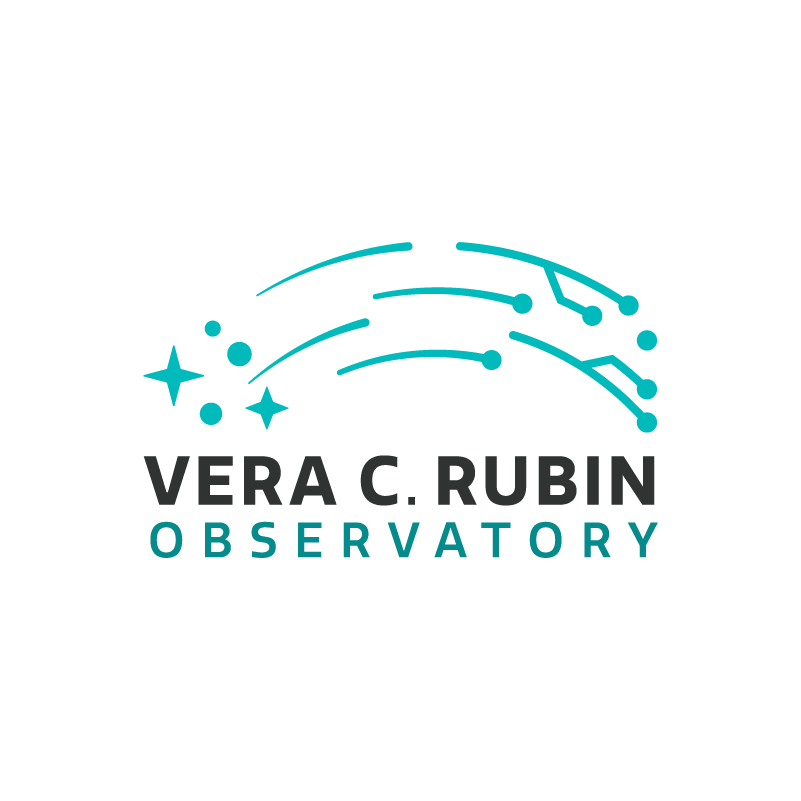Rubin Observatory Digest for 11 February 2025
12 February 2025
Project & Science News
The LSST Camera was removed from the summit clean room on February 4th and then moved from its support stand to the camera rotator the following day. This marks the first time that the LSST Camera has been integrated with (a part of) the telescope! While the Commissioning Camera — which was previously installed on the camera rotator — has the same interface, the LSST Camera is outfitted with a new cooling system. This system includes vacuum insulated hoses which need to be properly managed during the motion from the camera cable wrap (CCW), camera rotator and the camera hexapod. Over the next couple of weeks, the Camera team will be testing the performance of this additional system on the camera rotator motion systems. Photos of the LSST Camera move are available in the Gallery.
The LSST Camera group has released a technote (https://sitcomtn-148.lsst.io) on results from the LSST Camera Electro-Optical testing campaign that occurred from September to December. The document, with Yousuke Utsumi as lead editor, contains over 250 pages of information learned about the detailed performance of the Camera and Focal Plane.
Installation of Rubin’s in-dome calibration screen was completed during the first part of January. First, the 24 honeycomb-core, aluminum-skinned panels that make up the 10.27-meter diameter screen surface were brought to the dome. They had been in safe storage near the Summit since the highly reflective surface was applied to them by Labsphere in 2021. The dome mechanical team, led by Hernán Herrera, developed a detailed procedure for lifting them into place using special winches and soft cloth slings to avoid damaging the delicate surfaces. Before carrying this procedure out with the real panels, the process of lifting and attaching them to the backing structure was tested with surrogates made to the same shape and weight of the inner and outer ring of panels. The installation was scheduled to take about a month, but was completed in less than half that time, taking good advantage of the extensive preparation, efficiently devised means and skilled installation team. Photos of the calibration screen installation are available in the Gallery.
The System Integration, Test and Commissioning (SIT-Com) team has organized several workshops to synthesize lessons learned from the successful ComCam on-sky engineering campaign and to refine plans and operational procedures in preparation for on-sky commissioning with LSSTCam. The team has also continued to analyze data collected during the ComCam campaign, for example, holding a workshop to delve into the many instrumental and environmental factors that affect the delivered image quality.
LSST Discovery Alliance Announcements
LSST-DA began a series of weekly LINCC Frameworks Office Hours on January 23rd. Over the past few years, the LINCC Frameworks team has been working to develop robust open-source software tools to support analysis of LSST data at scale. To help the community learn more about these tools and how to use them for their own analysis, the LINCC Software Engineering group will hold weekly Office Hours with members of the team. LINCC Frameworks Office Hours are held virtually at 1pm ET / 10am PT / 7pm CET on most Thursdays (the second Thursday of every month the LINCC Frameworks tech talk series will be held in place of office hours. See these events and access Zoom links on the LSST-DA public calendar.
Operations Updates
Reminder: If you plan to work with Rubin Data in the future, we encourage you to sign up for an account on the Rubin Science Platform now. This will allow you to get familiar with the interface, work out any issues, and get your data rights verified by the project so you can be sure to get data immediately when Data Preview 1 (DP1) is released. Rubin Data Rights holders can sign up for an account any time by following the instructions here.
Personnel announcements & opportunities:
Daniel Donoso joined Rubin’s summit engineering team as Electronics Engineer on February 3rd. Daniel will be focusing on the Telescope Mount Assembly, hexapods, rotator, dome, and in-dome calibration electronics as his first priorities.
David Jimenez has been promoted to Rubin summit electronics team lead and is now fully in that role after completing a transition period. Please coordinate with David for all electronics work on the summit.
Open positions with Rubin can be found on the Rubin hiring page.
Info for Project Members:
Nominate someone deserving for a future staff award on the Staff Awards page on the Project website (login required).
If you’d like to schedule a one-on-one meeting with Victor, Zeljko, Bob, or Phil, please fill out this form to indicate your preferred date and time.
The link to Rubin’s anonymous “suggestion box” will be changing soon, until a new link is announced please use this form (login required) to make suggestions.
Rubin Observatory swag items, including t-shirts, coffee mugs, tote bags, and more, are available for purchase in our not-for-profit online store.
Upcoming Meetings with Rubin Observatory Involvement
(those with an asterisk* are supported by LSST Discovery Alliance):
2025
|
February 11-13 |
Rubin Data Facilities Face-to-Face Meeting, Lyon, France |
|
February 18-21 |
Dark Energy Science Collaboration (DESC) Meeting, virtual |
|
February 24 |
DESC Sprint Day |
|
March 11-13 |
Rubin Joint Technical Meeting 2025 at SLAC, Menlo Park, CA |
|
March 18-25 |
NSF Research Infrastructure Workshop, El Segundo, CA |
|
June 8-12 |
AAS 246 Summer Meeting, Anchorage, AK |
|
July 21-25 |
Dark Energy Science Collaboration (DESC) Meeting, Urbana-Champaign, IL & virtual |
|
July 28-August 1 |
Rubin Community Workshop 2025, Tucson, AZ |
|
September 14-19 |
LSST@Europe7, Poznan, Poland |


